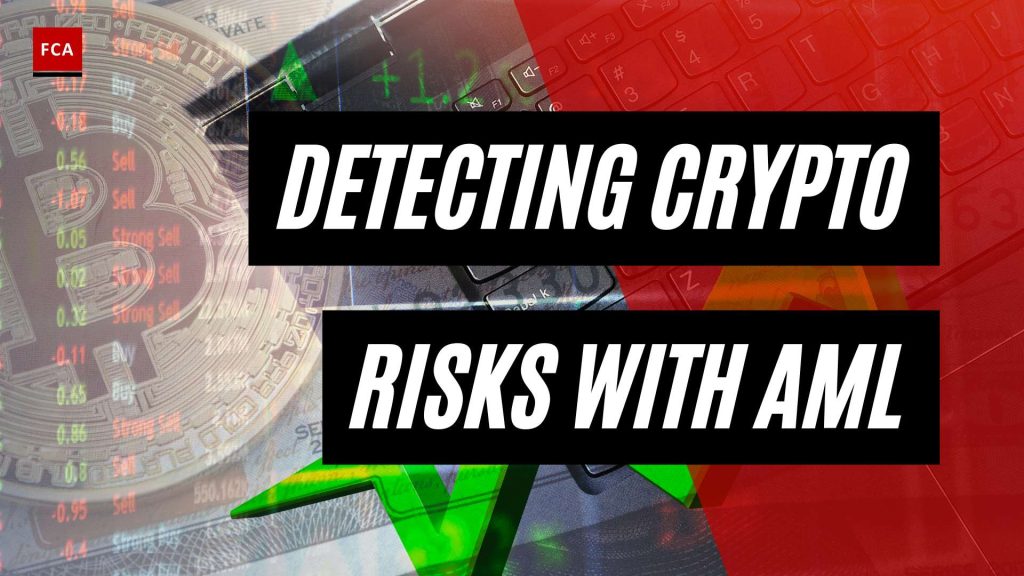Cryptocurrency and Anti-Money Laundering (AML)
To truly understand the importance of anti-money laundering (AML) in the cryptocurrency space, it’s essential to first grasp the concept of cryptocurrency itself. Cryptocurrency is a digital or virtual form of currency that utilizes cryptography for secure financial transactions, control the creation of new units, and verify the transfer of assets. It operates independently of a central bank and is decentralized in nature.
Understanding Cryptocurrency
Cryptocurrency is built on blockchain technology, which is a distributed ledger that records all transactions across a network of computers. Each transaction is grouped into a block and added to the chain in a chronological order. The transparency and immutability of blockchain technology make it an attractive solution for conducting financial transactions.
Cryptocurrencies like Bitcoin, Ethereum, and Ripple have gained significant popularity over the years, attracting a diverse range of users, including individuals, businesses, and even governments. However, due to the pseudonymous nature of cryptocurrency transactions, concerns have arisen regarding their potential misuse for illicit activities.
The Importance of AML in the Cryptocurrency Space
The integration of AML measures in the cryptocurrency space is of utmost importance to mitigate the risks associated with money laundering, terrorist financing, and other financial crimes. AML refers to a set of regulations, procedures, and practices designed to prevent, detect, and report suspicious activities that may involve the proceeds of illegal activities.
Cryptocurrencies offer certain advantages to money launderers, such as the potential for anonymity, speed, and global reach. These factors make it imperative for cryptocurrency businesses, including exchanges, wallet providers, and other service providers, to implement robust AML frameworks to ensure compliance with regulatory requirements.
By conducting proper AML screening, cryptocurrency businesses can identify and deter illicit activities within their platforms. AML screening involves the use of various techniques and tools to monitor transactions and detect any suspicious patterns or red flags. This helps to create a safer and more trusted environment for legitimate users of cryptocurrencies.
To learn more about the specific red flags for money laundering in cryptocurrency and the techniques and tools used for AML screening, refer to the next sections of this article: Detecting Money Laundering in Cryptocurrency and AML Screening Techniques and Tools.
As the cryptocurrency landscape continues to evolve, so do the regulatory frameworks governing AML in this space. Governments and regulatory bodies around the world are increasingly implementing stricter regulations and guidelines to ensure the integrity of cryptocurrency transactions. To delve deeper into the global AML regulations specific to cryptocurrency, explore our article on AML regulations for cryptocurrency.
The future of AML screening in cryptocurrency holds promising advancements, with emerging trends and technologies playing a crucial role in enhancing the effectiveness of AML measures. Stay tuned to the final sections of this article to explore the potential of these emerging trends and the challenges associated with balancing privacy and security: Emerging Trends and Technologies and Balancing Privacy and Security.
AML Screening for Cryptocurrency Transactions
Cryptocurrency has gained significant popularity in recent years, but it has also become a target for illicit activities, including money laundering. To combat this, Anti-Money Laundering (AML) screening has become an essential component of the cryptocurrency ecosystem. This section will explore the need for AML screening in cryptocurrency transactions and how it safeguards these transactions.
The Need for AML Screening in Cryptocurrency
The decentralized and pseudonymous nature of cryptocurrencies makes them attractive to money launderers and other criminals seeking to hide their illicit funds. Cryptocurrencies can be easily transferred across borders and often without the need for intermediaries, making them an ideal tool for money laundering activities.
AML screening plays a crucial role in detecting and preventing money laundering in the cryptocurrency space. It helps identify suspicious transactions, patterns, and entities involved in illegal activities. By implementing robust AML screening measures, cryptocurrency businesses can protect themselves from legal and reputational risks, ensuring compliance with relevant regulations.
How AML Screening Safeguards Transactions
AML screening safeguards cryptocurrency transactions by employing various techniques and tools to identify and flag suspicious activities. These measures include transaction monitoring, customer due diligence, and sanctions screening.
Transaction monitoring involves analyzing transactional data and applying algorithms to detect suspicious patterns or anomalies. It helps identify transactions that deviate from normal behavior, such as a sudden influx of funds or frequent transfers to high-risk jurisdictions. By continuously monitoring transactions, cryptocurrency businesses can identify and mitigate potential money laundering risks.
Customer due diligence is another essential aspect of AML screening. It involves verifying the identity of customers and assessing their risk profiles. By implementing robust know-your-customer (KYC) procedures, cryptocurrency businesses can ensure that they are dealing with legitimate individuals or entities. KYC procedures typically involve verifying personal information, conducting identity checks, and assessing the source of funds.
Sanctions screening is another critical component of AML screening in the cryptocurrency space. It involves cross-referencing customer data against global sanctions lists to identify individuals or entities involved in illegal activities or associated with sanctioned regions. By flagging and reporting such entities, cryptocurrency businesses contribute to the global efforts to combat money laundering and terrorist financing.
To effectively implement AML screening, cryptocurrency businesses rely on advanced technologies and software solutions specifically designed for the crypto industry. These tools help automate the screening process, enhance accuracy, and improve efficiency. However, it’s important to note that AML screening is not a one-time process but an ongoing effort to stay vigilant against evolving money laundering techniques.
By implementing robust AML screening practices, cryptocurrency businesses can contribute to the integrity and trustworthiness of the industry. AML screening not only protects businesses from legal and reputational risks but also helps maintain the overall credibility of cryptocurrencies as a legitimate financial asset class.
In the next section, we will explore the red flags for money laundering in cryptocurrency transactions and the techniques and tools used for AML screening. Stay tuned to learn more about the measures employed to combat money laundering in the cryptocurrency space.
Detecting Money Laundering in Cryptocurrency
As the use of cryptocurrency continues to grow, so does the need to address the risks of money laundering within this digital space. Detecting and preventing money laundering activities is crucial to maintain the integrity and security of cryptocurrency transactions. In this section, we will explore red flags for money laundering in cryptocurrency and the techniques and tools used for AML screening.
Red Flags for Money Laundering in Cryptocurrency
Money laundering in cryptocurrency can be difficult to detect, but there are certain red flags that can help identify suspicious activities. These red flags include:
-
High transaction volumes: Unusually high transaction volumes may indicate attempts to obfuscate the source or destination of funds. Large amounts of cryptocurrency being moved quickly could be a sign of money laundering.
-
Frequent small transactions: Money launderers may attempt to hide illicit funds by conducting numerous small transactions, making it harder to trace the source of the funds.
-
Mixing services: The use of mixing services or tumblers, which combine funds from multiple sources, can make it challenging to trace the origin of funds and identify potential money laundering activities.
-
Unusual transaction patterns: Transactions that deviate from normal patterns, such as sudden spikes in activity or repetitive transfers between multiple accounts, may indicate attempts to launder money.
-
Anonymous or pseudonymous transactions: Cryptocurrencies that offer high levels of anonymity or pseudonymity can be attractive to money launderers. Transactions conducted without proper identification can raise suspicions.
It’s important to note that these red flags are not definitive proof of money laundering, but rather indicators that warrant further investigation. AML screening techniques and tools play a critical role in identifying and mitigating potential risks.
AML Screening Techniques and Tools
AML screening techniques and tools are designed to identify suspicious activities and patterns in cryptocurrency transactions. These techniques and tools include:
-
Transaction monitoring: Automated systems monitor cryptocurrency transactions in real-time, analyzing patterns and detecting anomalies that may indicate potential money laundering. This is done by comparing transactional data against predefined rules and thresholds.
-
Address clustering analysis: Address clustering analysis aims to link multiple addresses to a single entity or user. This technique helps identify patterns and connections between different cryptocurrency addresses, aiding in the detection of suspicious activities.
-
Blockchain analytics: Blockchain analytics tools analyze the publicly available information on the blockchain to identify patterns and track the flow of funds. These tools can help trace the source and destination of funds, providing insights into potentially illicit activities.
-
Know Your Customer (KYC): Implementing robust KYC procedures ensures that cryptocurrency exchanges and other service providers collect and verify user information. Proper KYC practices help prevent anonymous or pseudonymous transactions and enhance the ability to detect money laundering activities.
As the landscape of cryptocurrency evolves, so do the techniques and tools used for AML screening. It is crucial for cryptocurrency businesses and regulatory authorities to stay up-to-date with emerging trends, regulations, and technologies to effectively combat money laundering in the digital currency space. For more information on AML regulations for cryptocurrency, refer to our article on AML regulations for cryptocurrency.
By utilizing effective AML screening techniques and tools, the cryptocurrency industry can work towards safeguarding transactions and maintaining the integrity of the financial system.
Compliance and Regulatory Framework
In the ever-evolving landscape of cryptocurrency, compliance with anti-money laundering (AML) regulations is of paramount importance. Governments and regulatory bodies around the world have recognized the need to establish a robust framework to address the potential risks associated with cryptocurrency transactions. This section will delve into the global AML regulations for cryptocurrency and the compliance challenges faced by industry stakeholders along with potential solutions.
Global AML Regulations for Cryptocurrency
Due to the borderless nature of cryptocurrencies and their potential for illicit activities, various jurisdictions have introduced AML regulations specific to the cryptocurrency space. These regulations aim to ensure transparency, mitigate financial crime risks, and safeguard the integrity of the financial system. Let’s explore some key global AML regulations for cryptocurrency:
| Country/Jurisdiction | AML Regulations |
|---|---|
| United States | Financial Crimes Enforcement Network (FinCEN) regulations, including the Bank Secrecy Act (BSA) requirements for cryptocurrency businesses. |
| European Union | Fifth Anti-Money Laundering Directive (5AMLD), which includes provisions for virtual currencies and wallet providers. |
| Japan | Payment Services Act (PSA) and the Financial Instruments and Exchange Act (FIEA), which regulate cryptocurrency exchanges and service providers. |
| Singapore | Payment Services Act (PSA), which requires cryptocurrency service providers to be licensed and comply with AML requirements. |
| United Kingdom | Money Laundering, Terrorist Financing and Transfer of Funds (Information on the Payer) Regulations 2017, which apply to cryptocurrency exchanges and custodian wallet providers. |
These are just a few examples of the global AML regulations in place. Compliance with these regulations is crucial for cryptocurrency businesses to maintain their legitimacy, build trust, and prevent potential penalties or legal consequences. To ensure compliance, organizations must establish robust AML programs, implement effective cryptocurrency AML policies, and provide AML training to their employees.
Compliance Challenges and Solutions
Complying with AML regulations in the cryptocurrency space presents unique challenges. These challenges include the pseudonymous nature of cryptocurrency transactions, the decentralized nature of blockchain networks, and the rapid evolution of technology. However, industry participants have been actively working to address these challenges and find effective solutions. Let’s explore some of the compliance challenges faced by cryptocurrency businesses and potential solutions:
-
Customer Due Diligence (CDD): Verifying the identity of cryptocurrency users can be challenging due to the pseudonymous nature of transactions. However, businesses can employ various techniques, such as implementing cryptocurrency AML software that utilizes advanced identity verification methods and transaction monitoring tools to enhance their CDD processes.
-
Transaction Monitoring: Monitoring cryptocurrency transactions for suspicious activities is crucial for detecting potential money laundering or terrorist financing. Cryptocurrency businesses can implement robust cryptocurrency transaction monitoring systems that utilize artificial intelligence and machine learning algorithms to identify suspicious patterns and flag high-risk transactions.
-
Information Sharing: Effective information sharing among cryptocurrency businesses, financial institutions, and regulatory authorities is vital for combating money laundering in the cryptocurrency space. Collaborative efforts, such as establishing public-private partnerships and information-sharing platforms, can enhance the effectiveness of AML measures.
-
International Cooperation: Given the global nature of cryptocurrencies, international cooperation is essential to combat money laundering. Governments and regulatory bodies can work together to establish common standards, share intelligence, and foster cross-border collaboration to mitigate the risks associated with cryptocurrency transactions.
By addressing these compliance challenges and adopting innovative solutions, cryptocurrency businesses can demonstrate their commitment to AML regulations, protect their reputation, and contribute to a safer and more secure cryptocurrency ecosystem.
As the cryptocurrency landscape continues to evolve, compliance with AML regulations will remain a crucial aspect for all stakeholders involved. Staying up-to-date with the ever-changing regulatory environment, adopting best practices, and leveraging technology will be essential for maintaining compliance and safeguarding the integrity of cryptocurrency transactions.
The Future of AML Screening in Cryptocurrency
As the world of cryptocurrency and anti-money laundering (AML) continues to evolve, the future of AML screening in the cryptocurrency space holds exciting possibilities. In this section, we will explore two key aspects: emerging trends and technologies, and the delicate balance between privacy and security.
Emerging Trends and Technologies
The landscape of AML screening in cryptocurrency is constantly evolving, driven by advancements in technology and regulatory requirements. Here are some emerging trends and technologies that are shaping the future of AML screening:
-
Artificial Intelligence (AI) and Machine Learning: AI and machine learning algorithms are becoming increasingly sophisticated in detecting suspicious patterns and anomalies in cryptocurrency transactions. These technologies can analyze vast amounts of data in real-time, enabling more accurate and efficient AML screening.
-
Blockchain Analytics: As blockchain technology matures, so do the tools for analyzing blockchain data. Blockchain analytics platforms can provide deeper insights into transaction histories, identifying potential money laundering activities and improving the effectiveness of AML screening.
-
Regulatory Technology (RegTech): RegTech solutions specifically designed for cryptocurrency AML screening are emerging. These solutions integrate advanced algorithms, data analytics, and automation capabilities to streamline compliance processes and enhance the effectiveness of AML screening.
-
Collaboration and Information Sharing: The cryptocurrency industry is recognizing the importance of collaboration and information sharing among stakeholders. Initiatives like public-private partnerships and industry forums enable the exchange of knowledge, best practices, and the development of common standards for AML screening.
Balancing Privacy and Security
While AML screening plays a crucial role in safeguarding the integrity of cryptocurrency transactions, it must be balanced with the need to protect user privacy. Striking the right balance between privacy and security is essential for the future of AML screening. Here are key considerations:
-
Privacy-Preserving Technologies: Innovations such as zero-knowledge proofs and secure multi-party computation are being explored to enhance privacy in AML screening. These technologies allow for the verification of transaction legitimacy without revealing sensitive user information.
-
Regulatory Frameworks: Regulatory frameworks need to keep pace with technological advancements, ensuring that they strike a balance between effective AML screening and protecting user privacy rights. Clear and well-defined regulations can provide guidance to businesses and users while addressing potential privacy concerns.
-
User Consent and Transparency: Cryptocurrency businesses should prioritize obtaining user consent for AML screening processes and clearly communicate how user data is collected, stored, and used. Transparency builds trust and empowers users to make informed decisions regarding their privacy.
-
Education and Awareness: Promoting education and awareness around AML screening practices and privacy considerations is crucial. Users should understand the benefits of AML screening and how their privacy is protected to foster trust in the cryptocurrency ecosystem.
As the future unfolds, the continued collaboration between technology innovators, regulators, and industry participants will shape the landscape of AML screening in cryptocurrency. By embracing emerging trends and technologies while upholding privacy rights, the cryptocurrency industry can build a robust and secure environment that safeguards transactions against money laundering risks.








